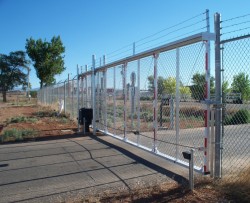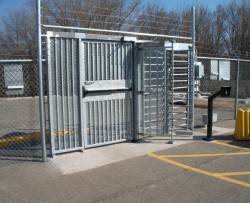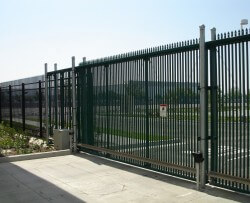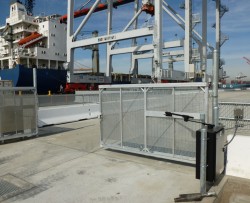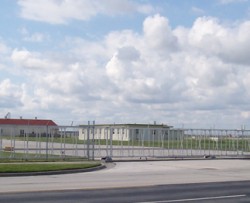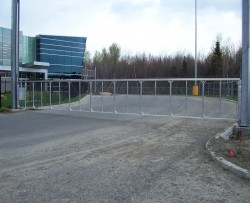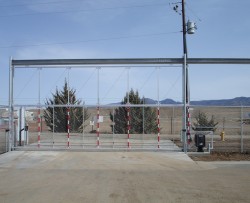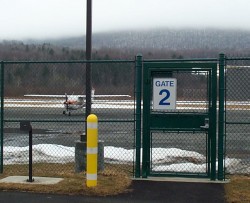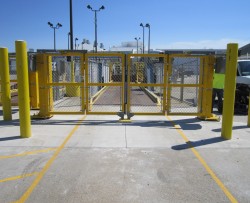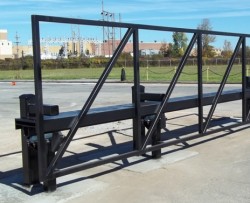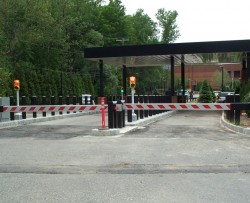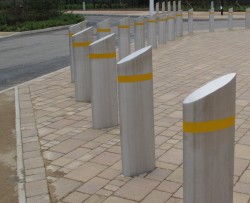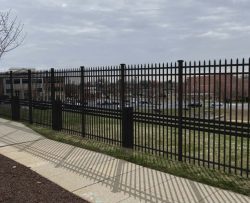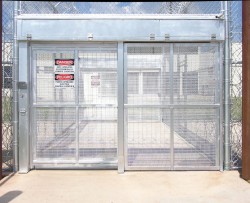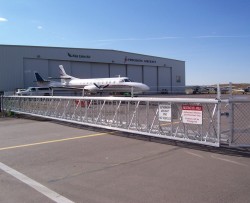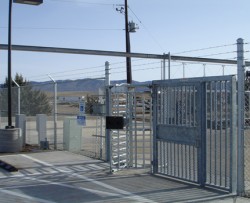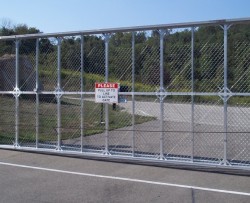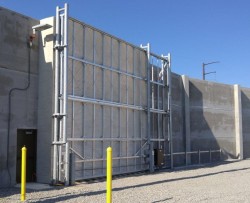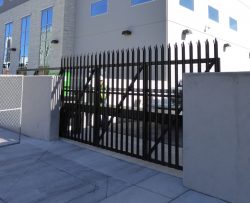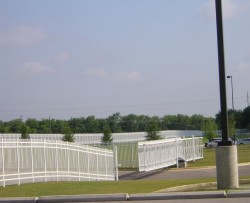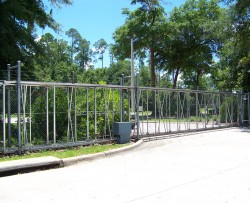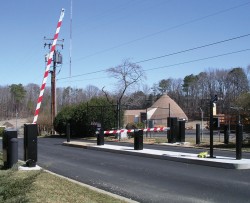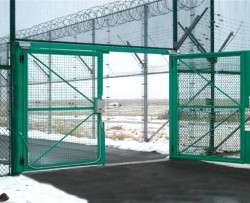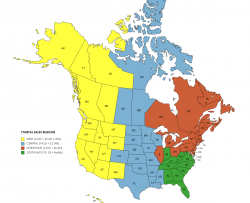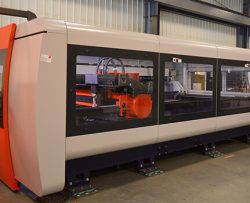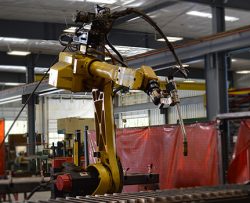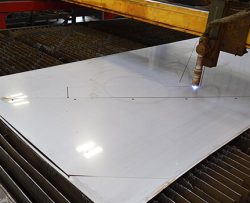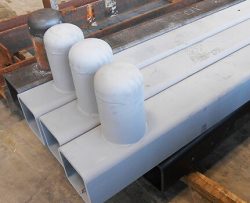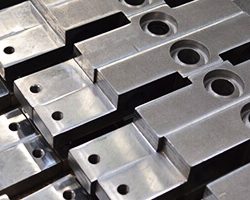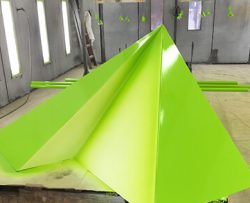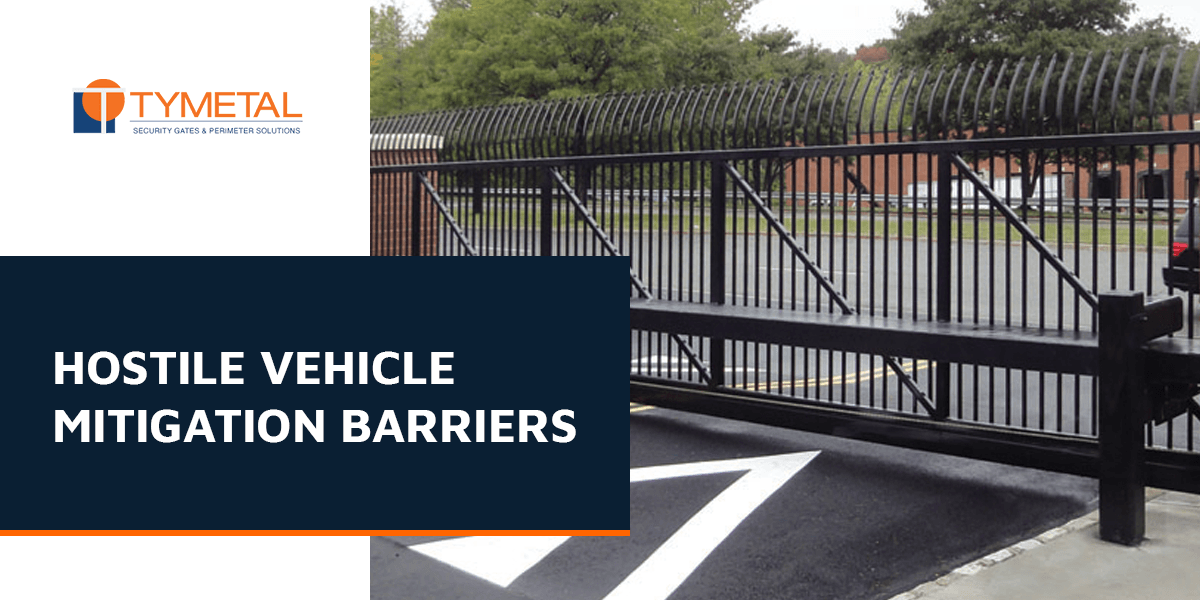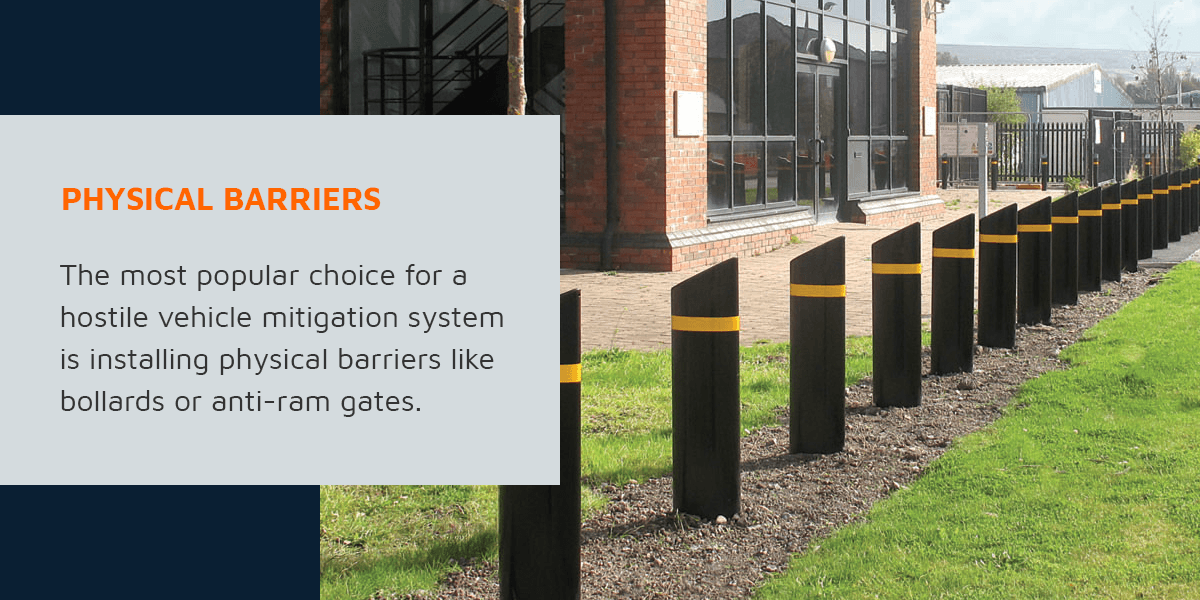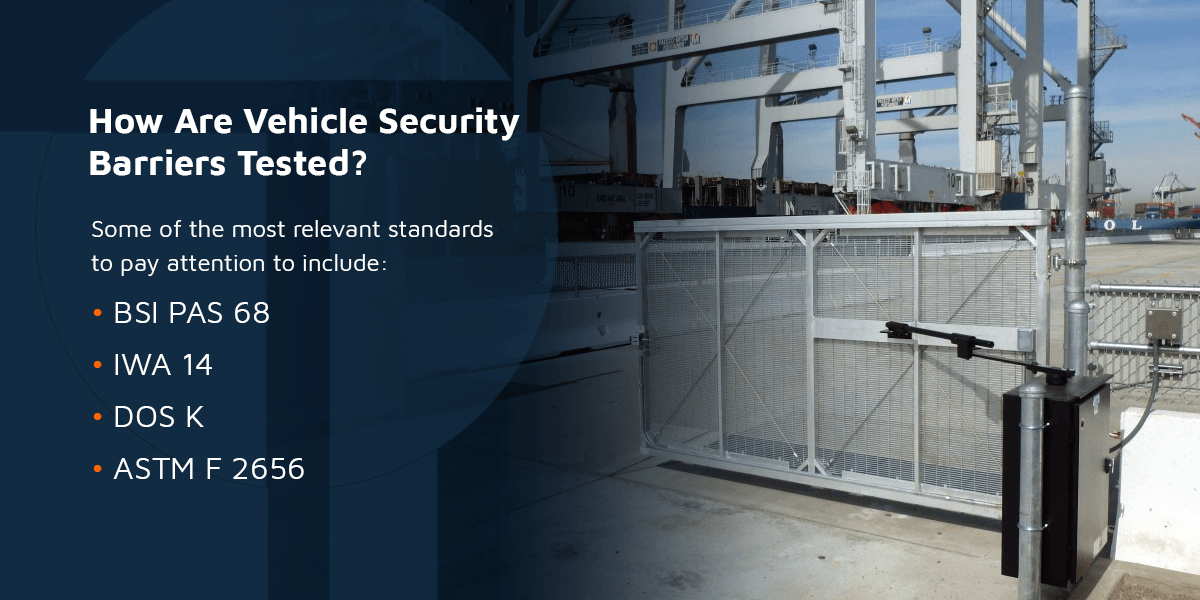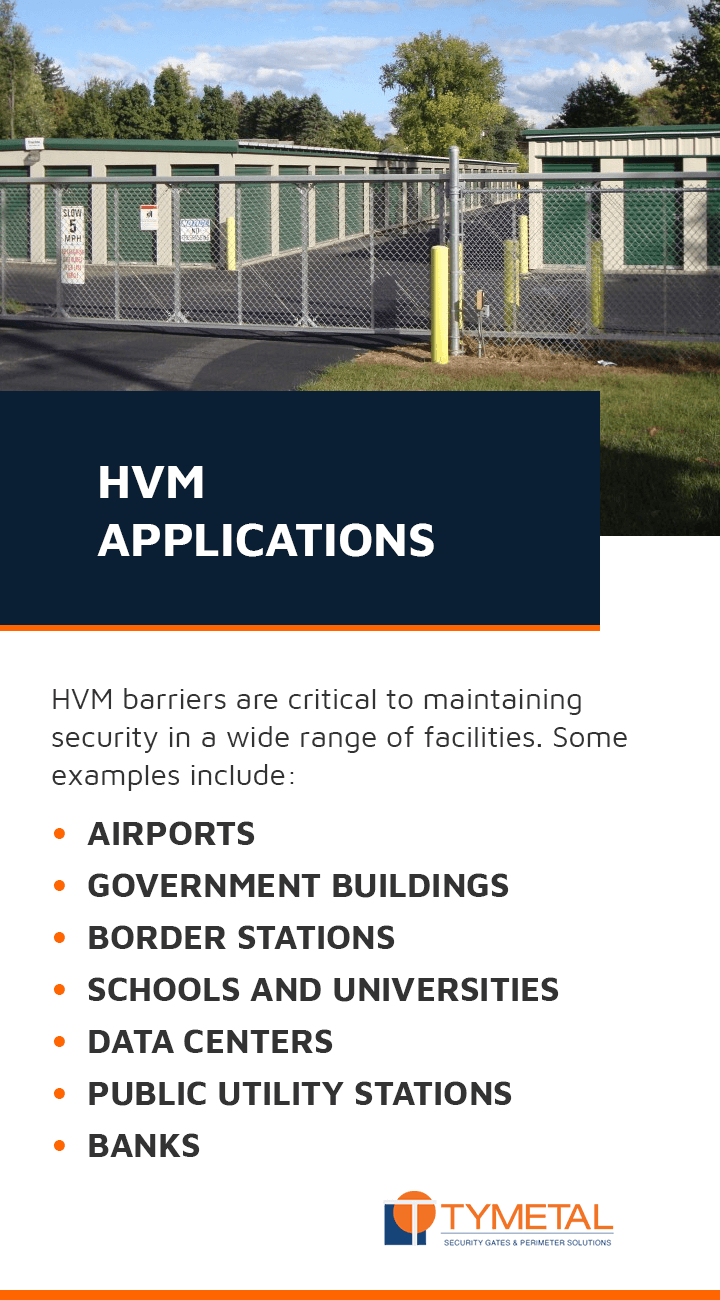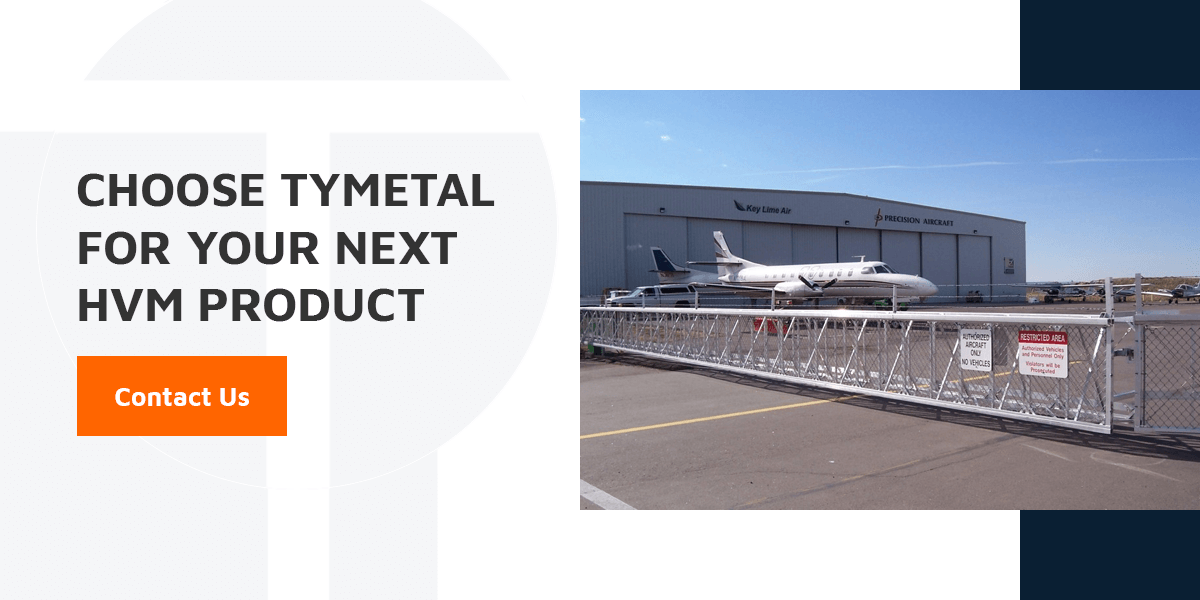Hostile Vehicle Mitigation Barriers
If a hostile intruder attempted to drive onto your property without stopping for fences, gates, or pedestrians, how far would they get? With the proper security measures in place, you can halt these vehicles in their tracks, protecting your people and property. In this hostile vehicle mitigation guide, we’ll discuss some of the most effective measures you can take to defend against vehicle attacks.
Table of Contents:
What Is a Vehicle as a Weapon Attack? | How to Prevent Vehicle Attacks | What Are Hostile Vehicle Mitigation Barriers? | How Are Vehicle Security Barriers Tested? | Types of Vehicle Mitigation Barriers | HVM Applications |Choose TYMETAL For Your Next HVM Product
What Is a Vehicle as a Weapon Attack?
Vehicle crashes are, unfortunately, common occurrences that can often have devastating effects. In 2020 alone, there were 42,060 fatal vehicle crashes in the U.S. — That’s more than 115 crashes per day on average. Even when there is negligence involved, most crashes are accidents. In other words, drivers do not get into their vehicles with the intention of causing harm to themselves or others.
On occasion though, this is exactly the intention a person has when they get behind the wheel. Over the last decade, we’ve seen a rise in what has been deemed a vehicle as a weapon (VAW) attack, or a hostile vehicle attack. Methods of hostile vehicle attacks vary but these occur when, a person uses a vehicle to harm others and sometimes themselves, either as part of a random act of violence or as a targeted terrorist attack.
According to the Office of the Director of National Intelligence (ODNI), the most common type of vehicle-borne attacks in the U.S. are vehicle-ramming attacks. These attacks involve intentionally ramming a vehicle into another vehicle, a building or a person or group of people to cause harm.
One of the most severe vehicle-ramming attacks worldwide occurred in the summer of 2016 in Nice, France, where a driver intentionally drove into a crowd, killing 86 people and injuring many more. Most instances of VAW attacks are not this deadly, but they do often result in fatalities and injuries.
VAW incidents can also cause severe property damage. Rather than driving into pedestrian areas, some vehicle-ramming incidents may involve driving into building facades. In this case, the attacker’s goal is to damage or disrupt operations in the building or is simply an act of vandalism.
How to Prevent Vehicle Attacks
Architects, engineers, and facility owners should be aware of the threat of VAW attacks and implement measures to protect buildings and people from this threat. The security measures taken to assess these risks and protect against them are known as hostile vehicle mitigation (HVM). There are two main approaches to mitigating the risk of a hostile vehicle attack.
- Campus design: One option is to design the roads on a campus to make it more difficult for a vehicle to pick up speed and drive into pedestrian areas or buildings. This choice often involves designing curved access roads to the facility or including a sharp turn just before the entrance. If you are designing a campus from the ground up, these choices can help, but it would be best if you still considered adding barriers.
- Physical barriers: The most popular choice for a hostile vehicle mitigation system is installing physical barriers like bollards, crash fences & anti-ram gates. These devices are designed to block vehicles from entering certain areas, even if the vehicle is speeding straight toward the barrier. Installing physical barriers is an option for both new construction projects and existing buildings and campuses.
Design choices and hostile vehicle barriers will not necessarily prevent a bad actor from planning a VAW attack. But if an individual does try to carry out their plan, they should be slowed or stopped entirely with the appropriate measures put in place.
What Are Hostile Vehicle Mitigation Barriers?
Physical barriers are one of the best options to protect pedestrian areas and buildings from possible VAW attacks. Because of this function, these barriers are also known as hostile vehicle mitigation barriers.
Remember that mass multiplied by acceleration gives us an object’s force. Considering that an average SUV can easily weigh 5,000 pounds, you can imagine how much force would be exerted if that SUV were to come speeding toward a building. The energy of this force increases with larger vehicles, like a semi-truck. To keep people and buildings safe in these instances, you need a barrier strong enough to stand up to that level of impact and one that can stop a VAW in its tracks.
You have likely seen HVM barriers on college campuses, around government buildings and throughout cities without even noticing they are there. In public spaces like these, barriers often take the form of bollards and may even be decorative in appearance so they do not feel intrusive. Private facilities may have more obvious forms of physical security, such as a fence that surrounds the property. In these cases, anti-ram gates may be the barrier of choice to stop vehicles attempting to gain access to the property.
How Are Vehicle Security Barriers Tested?
HVM barriers must be crash-tested — meaning, they have undergone testing to ensure they meet specific standards for standing up to a moving vehicle. Some of the most relevant criteria to pay attention to include:
- US DOS/DOD K: The Department of State (DOS) and Department of Defense (DOD) ratings are no longer officially recognized, but you may still see them referenced. A K rating of K4, K8 or K12 signifies that a barrier can stop a 15,000 lb vehicle traveling at 30, 40, and 50 mph, respectively.
- ASTM F 2656: ASTM ratings have replaced the DOS and DOD ratings in the U.S. These standard shares similarities with the DOS K rating, but measures penetration in more detail.
- BSI PAS 68: The British Standards Institution (BSI) Publicly Available Specification (PAS) 68 is a key standard for hostile vehicle mitigation products of various kinds, especially in the U.K. A BSI PAS 68 rating will include information on the type of vehicle and the speed of impact a barrier can withstand.
- IWA 14: Another important standard is International Workshop Agreement (IWA) 14, which specifies requirements for a vehicle security barrier’s essential impact performance. This standard is used globally.
Read our guide to Understanding Crash Ratings
Types of Vehicle Mitigation Barriers
Vehicle mitigation barriers come in a variety of forms, but each falls into one of two categories:
- Active barriers: Active vehicle barriers are designed to deploy and retract when necessary to help you control access points into your property. A typical example is a drop-arm crash beam that runs across an access road to keep it closed off. A person needs to provide the proper credentials to enter the facility, and the beam raises to let them in.
- Passive barriers: Passive barriers remain in place at all times, so they are not meant for access points. Instead, they guard the perimeter of an area where vehicles should never enter. For example, this would include immovable features like walls, fences, and bollards.
Most properties will need both active and passive barriers for complete perimeter protection. Some HVM barriers come in both active and passive options, but most are designed either for perimeters or for access points. Let’s look at some of the most common options you can consider for HVM security on your property.
1. Crash-Rated Planters
Typical landscape features often fall short of the security many facilities need to prevent hostile vehicle attacks, especially for high-security facilities. Instead, integrate HVM barriers designed to look like attractive landscape features which also offer the strength you need for HVM security. The Universal Slimline Planter 40 from TYMETAL Corp. is strong enough to stop a vehicle that weighs 7.5 metric tons traveling at 40 mph. That strength comes from a device that, on the surface, simply looks like a sleek, attractive planter you can fill with flowers or greenery.
2. Crash Beams
A great option for access points is a drop-arm crash beam, also known as an anti-ram beam. These beams resemble the arms that descend to block access to a parking garage and move out of the way to let you enter once you have purchased a ticket. But crash beams are designed to be stronger than ordinary barrier gate arms. These beams are made from durable materials like aluminum and steel and are anchored in place with a concrete base.
Crash beams from TYMETAL are rated to withstand collisions from vehicles traveling at 30 to 50 mph depending on the model you choose. We also offer crash beams with different systems of operation, including:
- Manual operation
- Hydraulic operation
- Electro-mechanical operation
3. Bollards
Vehicle mitigation bollards are cylindrical posts that, when spaced a few feet apart, can allow pedestrians and cyclists to freely enter an area while blocking it from vehicles. Bollards come in a variety of types, including removable and fixed options, and can be made from various materials, but they must be strong enough to visually deter a vehicle and stop one that is speeding toward a pedestrian area.
- Removable: To block vehicle access to an area part of the time, use removable bollards. These bollards are designed to be removed or pivot into the ground. They are typically capped over with a ground cover lid so that they are noticeable when retracted. Removable bollards can be redeployed again whenever you need to restrict access to an area. For example, you can use removable bollards to block an entrance to a parking lot or to protect pedestrians attending a street festival.
- Fixed: Fixed bollards are stationary, so they continuously block an area where they are installed and in some instances, you will find some surface-mount options for fixed bollards. Anti-ram bollards are often installed deep into the ground with a concrete footing to give crash resistance against moving vehicles. TYMETAL offers crash-rated security bollards that don’t require such a deep installation, making them easier to install.
TYMETAL bollards stand out in the industry because of their shallow-mount design. They do not need to be installed as deep since they are designed to flex slightly upon impact. This slight movement allows them to reflect much of a vehicle’s energy back to it. Our most heavy-duty model can stop a 16,534 lb vehicle traveling at 50 mph.
Bollards are a popular choice because of their efficacy and versatility. Some bollards are decorative and may even be cast in a material like bronze or equipped with lights. Other bollards may stand out more as security devices with yellow stripes.
4. Fences
Most fences prevent people from gaining access to a facility on foot, but the average fence would crumple if a vehicle were to ram into it. In order to boost the security of your property’s perimeter against VAW attacks, you need to install crash fences, also called anti-ram fences. Buildings that are more likely targets for terrorist attacks especially need a crash fence to reinforce their perimeter security.
These fences are designed to stop vehicles, not people on foot, so they are used in conjunction with your existing perimeter fence as an added layer of protection. Our crash-rated fences can stop a vehicle up to 15,000 lbs traveling at 50 mph and they come in a variety of configurations to suit different sites and security needs.
Generally, these fences consist of posts or bollards connected by cables. When a vehicle runs into the fence, its energy will be deflected, and the car will ultimately be stopped before it can continue farther.
5. Gates
Gates are a common feature of any property with restricted access. Typically, a closed gate is enough to stop a driver who isn’t allowed access, but that equation changes when it is the driver’s plan is to ram the gate. VAW attacks like these call for stronger, anti-ram gates. Like ordinary gates, crash gates can open and close either manually or automatically to allow authorized people to enter and exit the premises.
Crash-rated gates from TYMETAL are available in various types to fit different applications. One of the more popular options is a cantilever slide gate, which can be automated or not. These gates are supported on one end by (2) or (4) posts. They include an enclosed track system. There are no overhead supports, ground wheels, or ground track required.
Some other gate options include vertical lift gates, overhead slide gates, and swing gates. Equipping your facility with a crash-rated gate is crucial since a hostile intruder will most likely target access points when attempting to breach your property’s perimeter.
HVM Applications
HVM barriers are utilized by a wide range of facilities and are critical to maintaining their security. Common examples include:
- Airports
- Government buildings
- Border stations
- Schools and universities
- Data centers
- Public utility stations
- Banks
- Educational buildings
- Sporting arenas
- Public squares and parks
Any facility that wants to boost its counter-terrorism measures can install HVM barriers. Even public spaces like parks, bike paths and shopping areas can use barriers to protect pedestrians.
Choose TYMETAL for Your Next HVM Product
If you need to increase your property’s hostile vehicle mitigation measures, partner with TYMETAL. With decades of experience in the industry and a commitment to continuous innovation, TYMETAL offers the very best in HVM technology. To learn more about how we can help you with HVM security, fill out our online form or call us at 888-978-GATE (4283).
